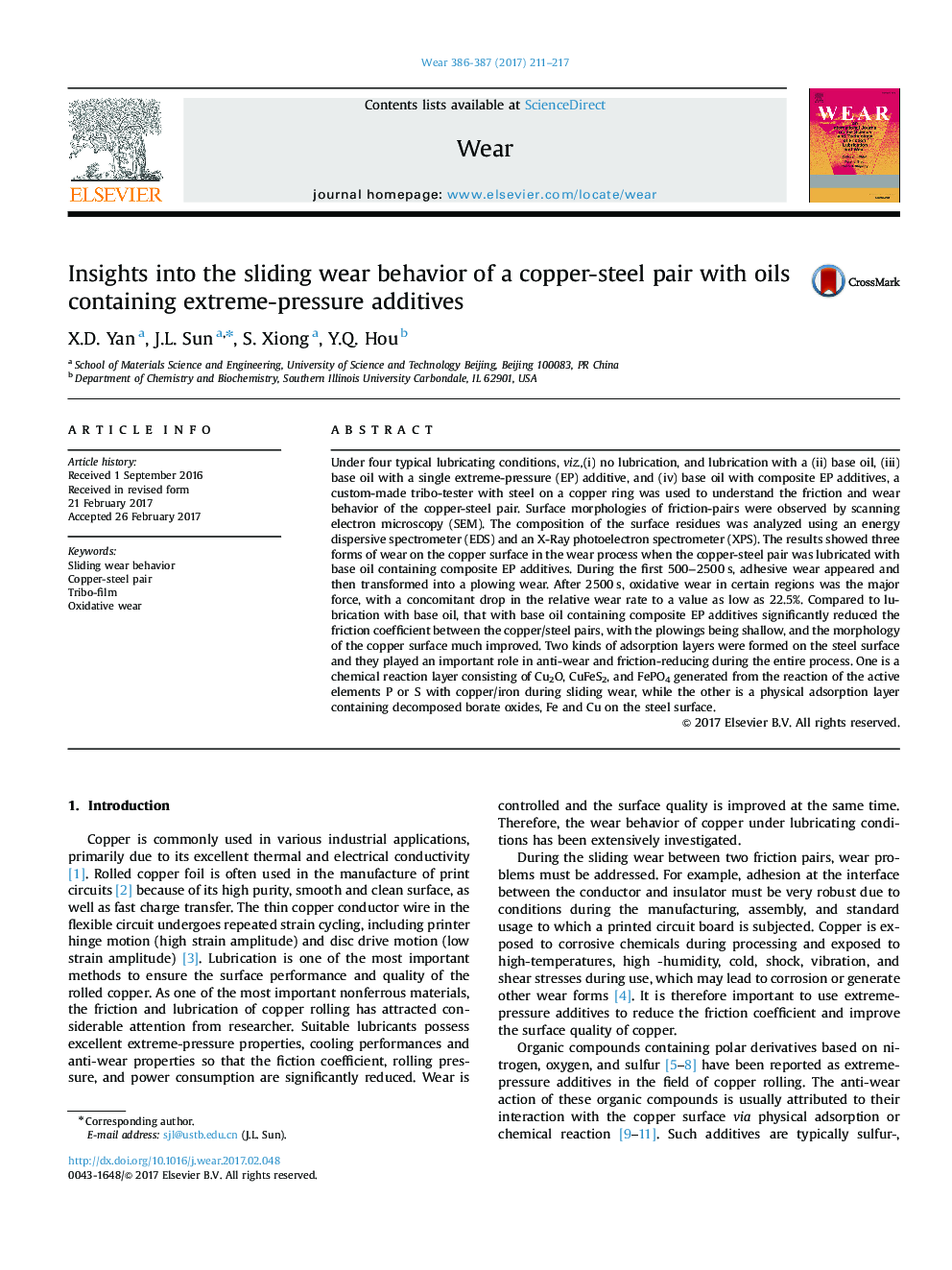| Article ID | Journal | Published Year | Pages | File Type |
|---|---|---|---|---|
| 4986450 | Wear | 2017 | 7 Pages |
Abstract
Under four typical lubricating conditions, viz.,(i) no lubrication, and lubrication with a (ii) base oil, (iii) base oil with a single extreme-pressure (EP) additive, and (iv) base oil with composite EP additives, a custom-made tribo-tester with steel on a copper ring was used to understand the friction and wear behavior of the copper-steel pair. Surface morphologies of friction-pairs were observed by scanning electron microscopy (SEM). The composition of the surface residues was analyzed using an energy dispersive spectrometer (EDS) and an X-Ray photoelectron spectrometer (XPS). The results showed three forms of wear on the copper surface in the wear process when the copper-steel pair was lubricated with base oil containing composite EP additives. During the first 500â2500Â s, adhesive wear appeared and then transformed into a plowing wear. After 2500Â s, oxidative wear in certain regions was the major force, with a concomitant drop in the relative wear rate to a value as low as 22.5%. Compared to lubrication with base oil, that with base oil containing composite EP additives significantly reduced the friction coefficient between the copper/steel pairs, with the plowings being shallow, and the morphology of the copper surface much improved. Two kinds of adsorption layers were formed on the steel surface and they played an important role in anti-wear and friction-reducing during the entire process. One is a chemical reaction layer consisting of Cu2O, CuFeS2, and FePO4 generated from the reaction of the active elements P or S with copper/iron during sliding wear, while the other is a physical adsorption layer containing decomposed borate oxides, Fe and Cu on the steel surface.
Keywords
Related Topics
Physical Sciences and Engineering
Chemical Engineering
Colloid and Surface Chemistry
Authors
X.D. Yan, J.L. Sun, S. Xiong, Y.Q. Hou,
